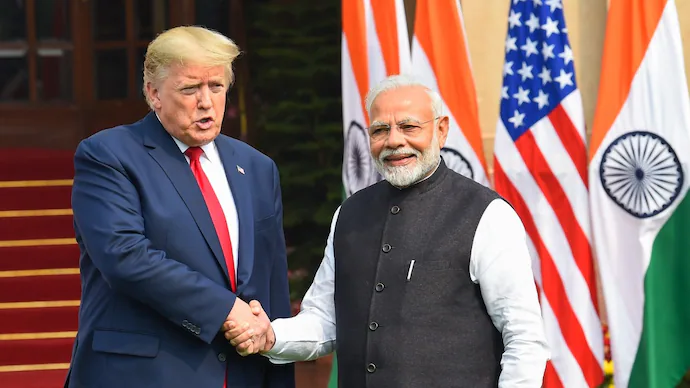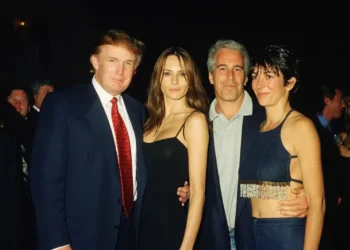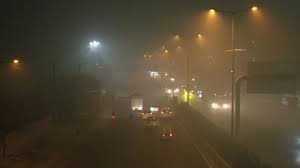U.S. tariffs of up to 50% on Indian goods threaten key sectors as Trump pushes to choke off Moscow’s oil revenue and flex tariff diplomacy.
BY PC Bureau
October 20, 2025 – In a striking display of his signature tariff diplomacy, U.S. President Donald Trump has renewed his combative stance toward India, warning from aboard Air Force One that New Delhi will face “massive tariffs” unless it curbs imports of discounted Russian oil.
The remarks — delivered en route to an undisclosed domestic stop — mark the latest escalation in a months-long trade standoff that has strained U.S.-India relations and underscored Trump’s broader push to economically isolate Moscow amid its ongoing war in Ukraine.
Speaking to reporters in the plane’s cabin, Trump repeated his controversial claim that Indian Prime Minister Narendra Modi personally assured him that India would halt Russian crude imports.
“I spoke with Prime Minister Modi of India, and he said he’s not going to be doing the Russian oil thing,” Trump said, his tone alternating between confidence and irritation. “But if they don’t comply, they’ll keep paying massive tariffs — and I mean massive.”
READ: Delhi’s Air Turns Toxic Pre-Diwali; AQI Soars to “Very Poor” Levels
The comments come just days after Trump first mentioned the alleged Modi conversation during an October 15 White House briefing with Ukrainian President Volodymyr Zelenskyy, where he claimed the Indian leader had promised an immediate end to Russian oil purchases.
India’s Ministry of External Affairs (MEA) had refuted that account, saying it was “not aware” of any such exchange and reaffirming that India’s energy policy is driven by “consumer interests and national security.” As of Sunday, the MEA had not responded to Trump’s renewed remarks, though officials suggested ongoing talks in Washington would address the “mischaracterization.”
A Trade War Fueled by Geopolitics
The current dispute dates back to August 2025, when Trump imposed a sweeping 50% tariff on Indian goods entering the U.S. — comprising a preexisting 25% duty and an additional 25% “secondary tariff” directly linked to India’s continued Russian oil imports.
Trump has justified these measures as part of his campaign to starve Moscow of wartime revenue, accusing New Delhi of indirectly funding Russia’s invasion of Ukraine by buying cheap crude diverted from sanctioned Western markets.
India — the world’s third-largest oil importer — has leaned heavily on Russian supplies since 2022, with Moscow emerging as its top supplier. According to Kpler, India imported 1.6 million barrels per day (bpd) of Russian crude in September 2025, accounting for 34% of its total oil imports despite a 10% dip earlier in the year.
These discounted shipments have saved Indian refiners billions. The Centre for Research on Energy and Clean Air (CREA) estimates that facilities like Reliance Industries’ Jamnagar refinery exported nearly $86 billion worth of refined products globally between February 2022 and July 2025 — including $36 billion to countries that themselves sanction Russia.
But the tariffs have taken a toll. U.S. imports from India declined sharply in the third quarter of 2025, with sectors such as textiles, pharmaceuticals, and jewelry — worth over $10 billion annually — bearing the brunt.
Indian officials have blasted the penalties as “unjustified,” pointing out that China, the largest buyer of Russian oil, has faced no comparable punishment despite far higher import volumes.
“Our energy policies are shaped solely by consumer security in a volatile global market,” the MEA reiterated last week, emphasizing efforts to diversify suppliers without destabilizing prices.
Trump’s Broader Strategy: Tariffs as Foreign Policy
Trump’s latest comments fit a familiar pattern: wielding tariffs as leverage on the global stage. Only last week, he proposed a “Ukraine Victory Fund” financed by up to 500% tariffs on Chinese imports to boost Kyiv’s war effort.
He has also pressured Japan to reduce Russian energy purchases, with Treasury Secretary Scott Bessent publicly urging Tokyo to align with Washington.
When it comes to India, Trump’s rhetoric has grown unusually personal. Despite hailing Modi as a “friend” during their February 2025 White House summit, Trump has oscillated between praise and warning.
“India’s a great country, tremendous people,” he said Sunday, before pivoting sharply. “But they’re helping Putin with this oil nonsense, and it’s got to stop.”
Analysts describe this as classic Trump brinkmanship — claiming a concession, then threatening escalation to force a real one.
Market data suggests some voluntary moderation. State-owned refiners such as Indian Oil Corp. cut Russian crude imports by over 45% between June and September 2025, while U.S. crude exports to India climbed to 310,000 bpd this year — up from 199,000 bpd in 2024 — and could reach 500,000 bpd by October.
Yet experts remain skeptical. Vandana Hari of Vanda Insights cautioned that replacing Russian oil “is easier said than done,” citing logistical challenges and refinery compatibility issues. Russian barrels, she noted, still trade 20–30% below Brent, keeping them highly attractive.
Diplomatic Tightrope and Market Ripples
India’s response so far has been measured, focused on de-escalation rather than confrontation. A high-level trade delegation is in Washington this week to discuss a potential bilateral energy framework, possibly expanding U.S. LNG exports to offset Russian dependence.
“We’ve indicated positively that India seeks a diversified energy portfolio,” an MEA official told Reuters, hinting at flexibility without outright capitulation.
In Washington, reactions were mixed. Senator Jeanne Shaheen (D-NH) praised Trump’s “toughness on Putin’s enablers” but warned against alienating a key Quad partner. “India’s not China — we need them in the Indo-Pacific,” she said.
Senator Lindsey Graham (R-SC) endorsed the tariff threats, while U.S. business groups, including the U.S.-India Business Council, urged a “pragmatic off-ramp” to avoid supply chain disruption.
Financial markets reacted cautiously: the Indian rupee held steady at ₹83.45 per dollar, while Nifty 50 futures slipped 0.3% amid tariff jitters. Brent crude rose slightly to $72.80 per barrel, as traders assessed the limited likelihood of India curbing Russian imports enough to dent Moscow’s $180 billion energy windfall.
Looking Ahead: A Test of Alliances
As Trump disembarked Air Force One, his warning loomed over what was once hailed as the “defining partnership of the 21st century.” With Diwali festivities underway in Indian-American communities and U.S. midterms on the horizon, diplomatic shuttle activity between Washington and New Delhi is expected to intensify in the coming weeks.
For now, Trump’s tariff rhetoric serves both as a carrot and a stick — citing a supposed Modi “assurance” to claim progress, while holding punitive duties as leverage.
Whether this brinkmanship yields compromise or deepens the divide remains to be seen. One thing is certain: in the high-stakes chessboard of global energy, no major player is ready to move their king just yet.













